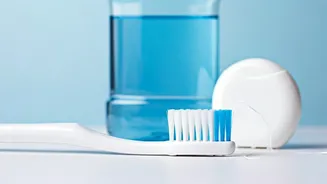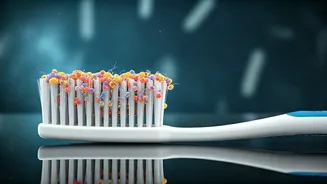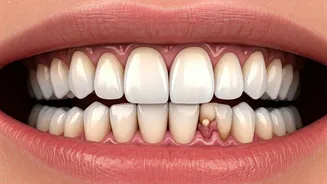Choosing the Right Brush
Selecting the right toothbrush is the first step towards good oral hygiene. Consider a brush with soft bristles; these are gentler on your gums and effectively
remove plaque and food particles. The size of the brush head should be appropriate for your mouth, ensuring you can reach all areas comfortably. Replace your toothbrush every three months, or sooner if the bristles become frayed. This regular replacement guarantees optimal cleaning performance and prevents the accumulation of bacteria. Keep the brush clean and store it upright to allow it to dry fully between uses, which also helps to prevent bacterial growth. These simple choices establish a strong foundation for dental health.
Electric vs. Manual
The electric versus manual toothbrush debate often arises in discussions about oral care. Both have their merits. Manual toothbrushes are straightforward and inexpensive, offering effective cleaning with proper technique. Electric toothbrushes, on the other hand, can provide a more thorough clean, especially for those who struggle with manual brushing. They often include features like timers to ensure adequate brushing duration and pressure sensors to prevent damage to gums. Ultimately, the best choice depends on individual preference and oral health needs. Whether manual or electric, consistency in brushing technique and duration are the most crucial factors for effective cleaning.
Mastering the Brushing
Correct brushing technique is essential for optimal oral hygiene. Place your toothbrush at a 45-degree angle to your gum line, gently moving the brush back and forth in short strokes. This approach targets plaque and debris effectively. Be sure to brush all surfaces of your teeth—the outer, inner, and chewing surfaces. Also, don't neglect to brush your tongue to remove bacteria and freshen your breath. Aim to brush for a full two minutes, ensuring all areas of your mouth are thoroughly cleaned. Brushing consistently and properly is key, helping to prevent cavities and gum disease. Remember to be gentle to avoid irritating the gums, which could lead to sensitivity and bleeding.
Importance of Flossing
Flossing is a crucial step in a comprehensive oral care routine, yet it’s often overlooked. Flossing removes plaque and food particles from areas that your toothbrush can't reach, such as between your teeth and under the gum line. This helps to prevent cavities and gum disease. Use about 18 inches of floss, winding most of it around your middle fingers, leaving an inch or two to work with. Gently guide the floss between your teeth, using a sawing motion, and curve it around each tooth in a 'C' shape. Make sure to go slightly below the gum line to remove any debris there. Flossing daily is ideal for maintaining optimal oral health.
Mouthwash: The Final Step
Mouthwash can serve as a valuable addition to your oral hygiene regimen. It helps to reach areas that brushing and flossing might miss, providing an extra layer of cleaning. Many mouthwashes contain fluoride, which helps to strengthen tooth enamel and prevent cavities. Others may have antibacterial properties to reduce plaque and gingivitis. Rinse with mouthwash after brushing and flossing, following the directions on the product label. It is often recommended to wait a few minutes after brushing before using mouthwash, especially if your toothpaste contains fluoride, as it could wash it away. Use mouthwash regularly for optimal benefits.
When to Replace
Regular toothbrush replacement is an essential part of maintaining effective oral hygiene. As mentioned before, replace your toothbrush every three months, even if the bristles don't appear visibly worn. Over time, the bristles become less effective at removing plaque and debris. Also, keep in mind that bacteria can accumulate on the bristles, so changing your toothbrush regularly keeps your mouth as clean as possible. Furthermore, consider replacing your toothbrush sooner if you have been sick, as it can harbor germs. These regular replacements ensure that your oral care routine remains effective.











